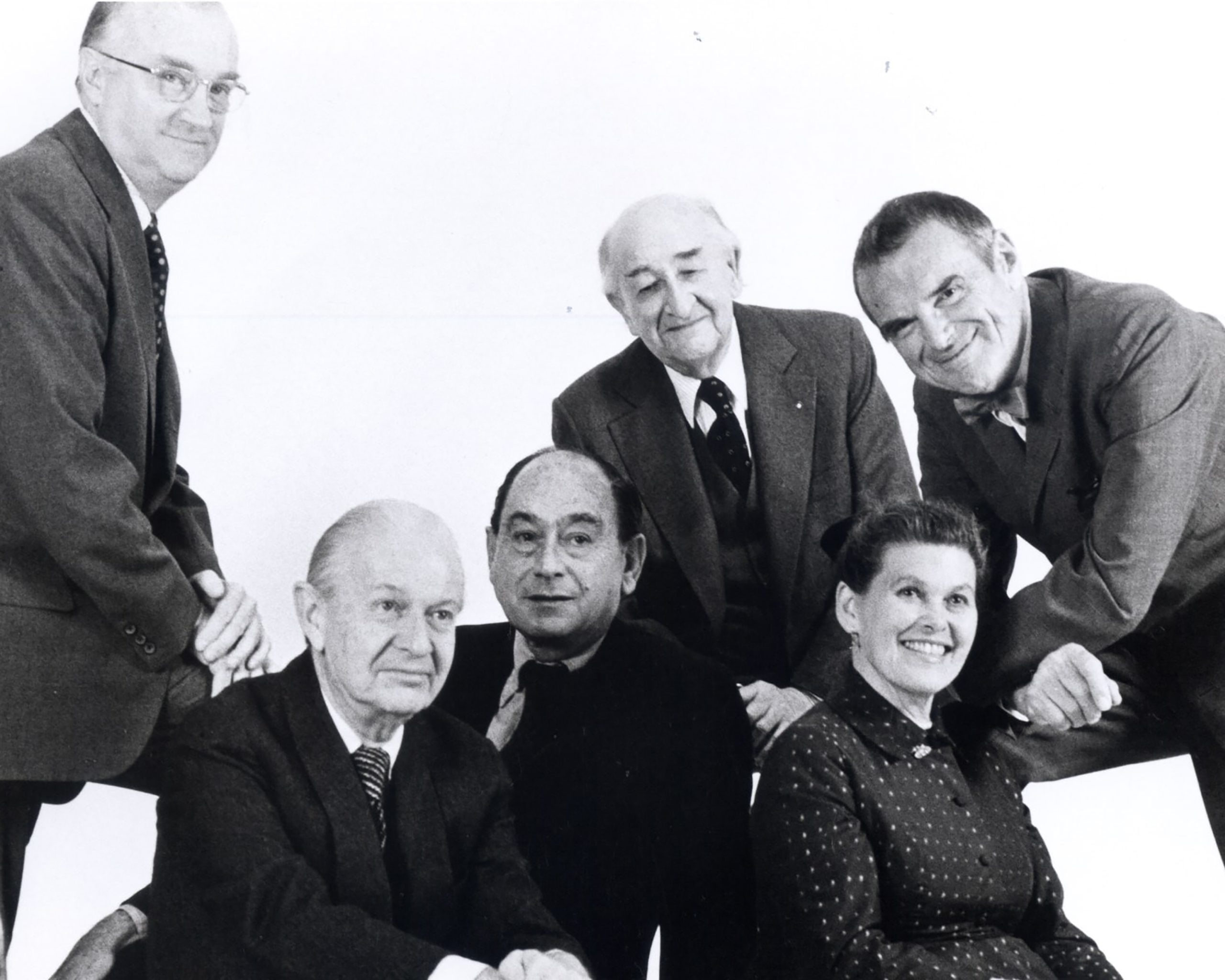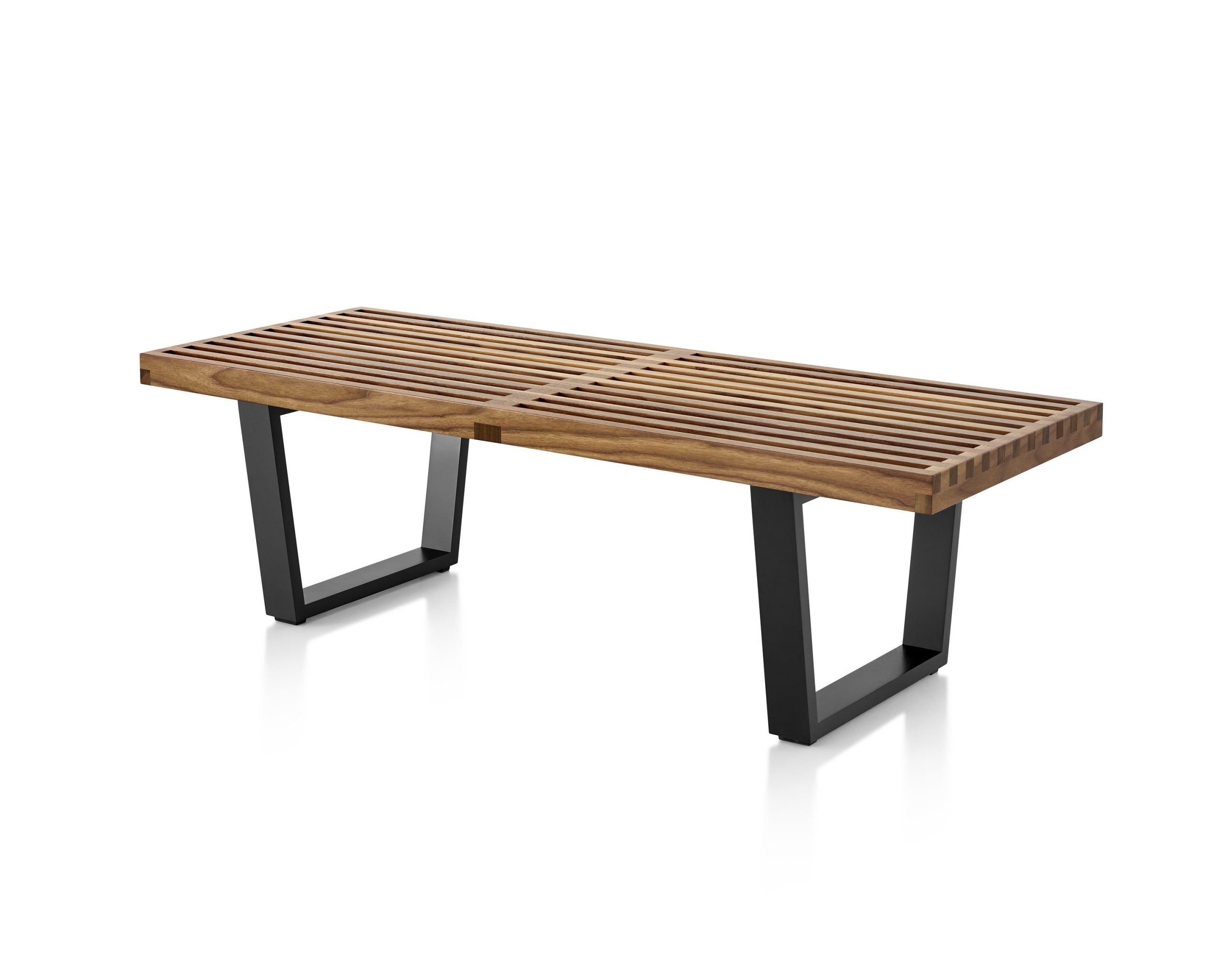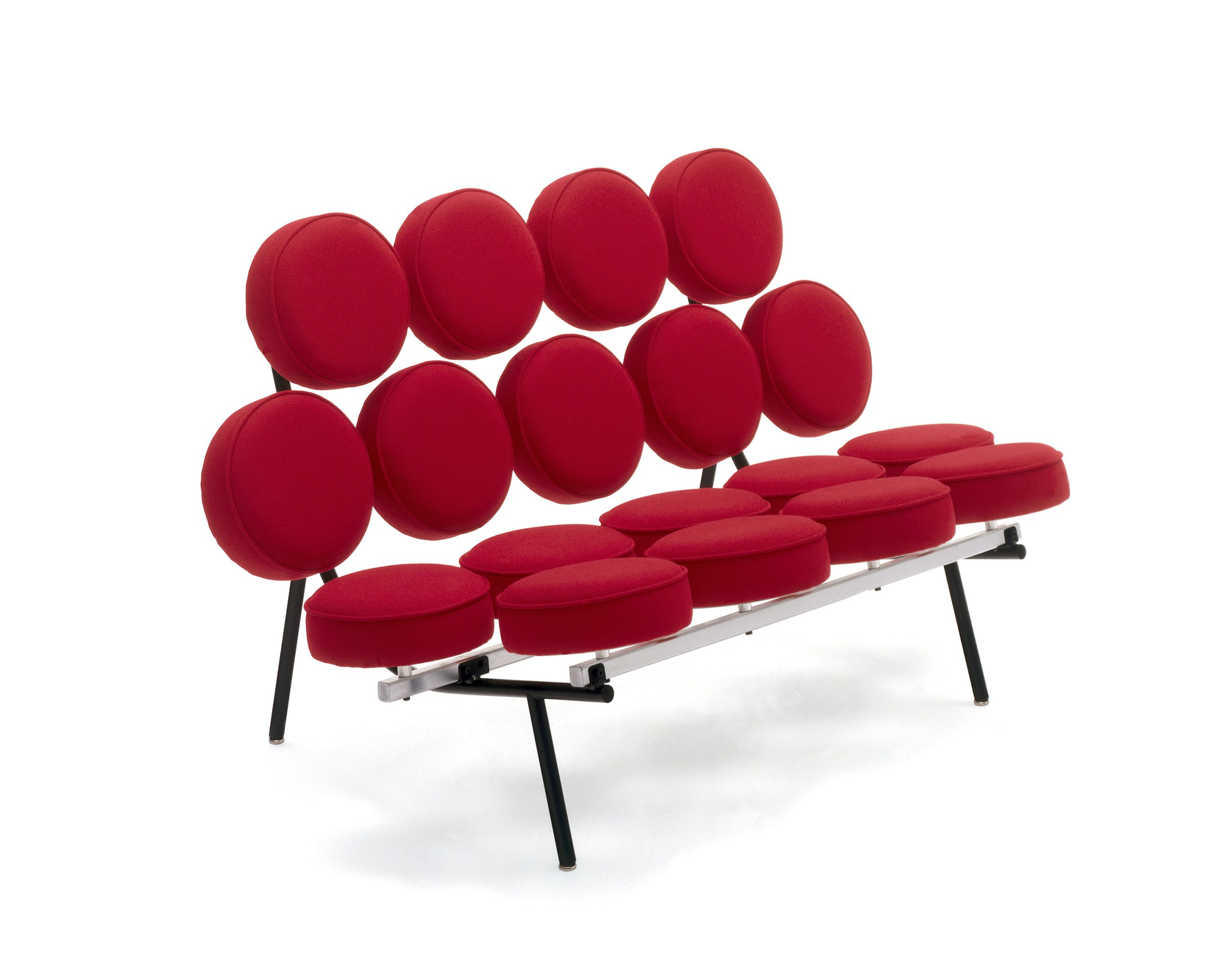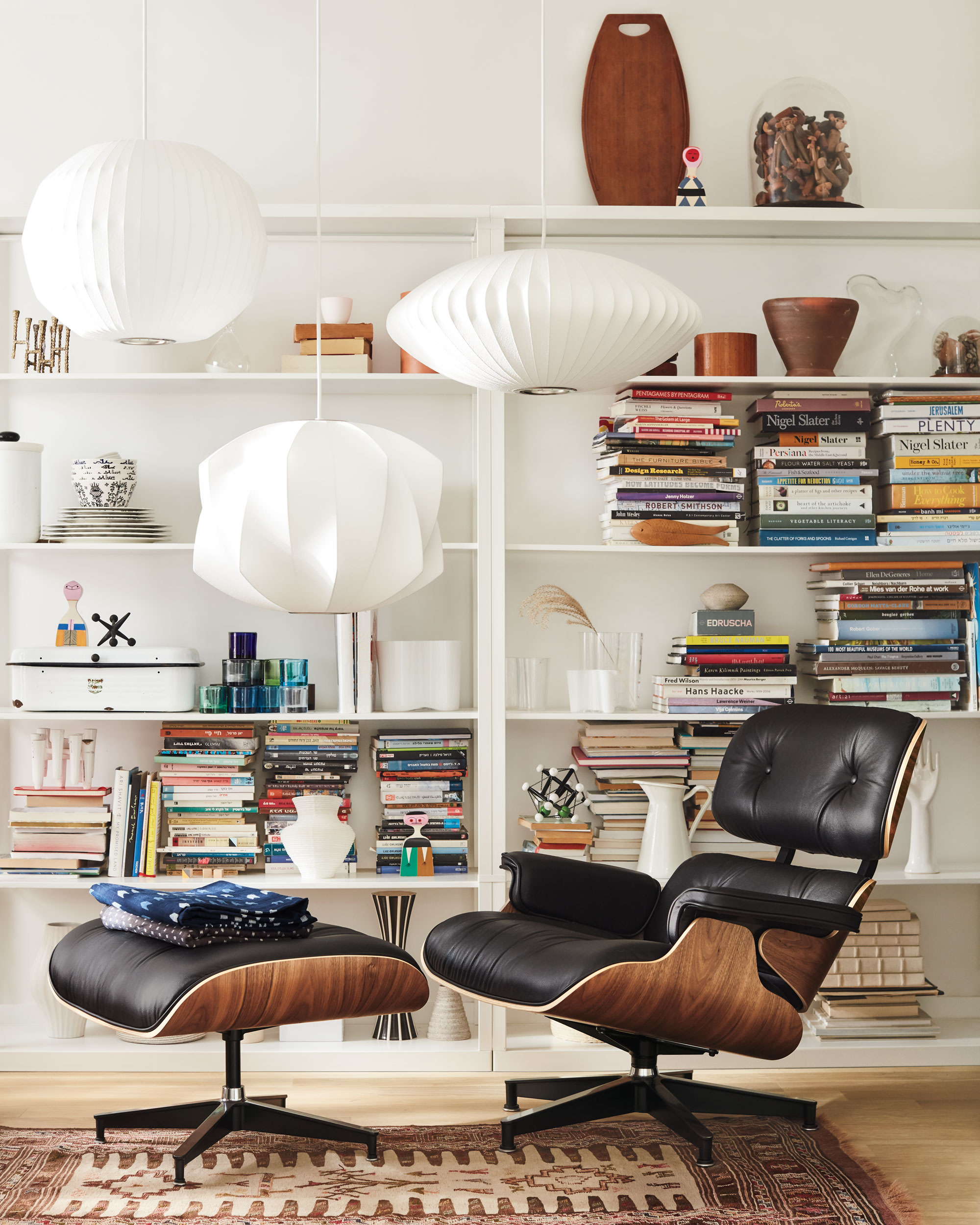Why furniture from this 100-year-old design firm is still a good investment
There’s hardly an office or a home that has not been touched by the Herman Miller design legacy
If there’s a lesson to be learnt from working from home, it’s that the benefits of the ergonomic chair are real. And we have a man called Bill Stumpf to thank. A key designer with iconic American furniture manufacturer Herman Miller, he joined in the early 1970s tasked with designing furniture for the modern office.
The chairs Stumpf designed, including the Aeron – the office chair by which all others are now judged – join a long line of exemplar designs from Herman Miller, which celebrates its centenary this year.
Founded in 1923 when DJ De Pree bought the Star Furniture company and renamed it in honour of his father in law, Herman Miller started to hit its stride as a business in the 1940s when De Pree found himself in need of a new design lead.

In 1945, he hired the up-and-coming designer George Nelson who released the platform bench in 1946. A year later Nelson helped De Pree recruit Charles and Ray Eames following the exhibition of their groundbreaking moulded plywood furniture.

By the early 1950s, the Eames’ research into new materials like fibreglass culminated in the release of the world’s first moulded fibreglass chairs, the popular shell chair still in demand today.
After the success of his platform bench, Nelson went on to design the Marshmallow lounge, as well as his perennially popular range of lights, including the Bubble, Cigar and Saucer pendants.

Subsequent designs to hit the market included the Eames Hang it All, with its distinctive ball-shaped hooks, and, perhaps the best known of Herman Miller’s chairs, the Eames lounge chair and ottoman, which took its inspiration from a baseball catcher’s mitt. An instant classic, the chair is now in the permanent collection at New York’s Museum of Modern Art.
Frank Di Giorgio, director at Living Edge, which is the main distributor of Herman Miller furniture in Australia, is the proud owner of an Eames lounge and ottoman, which is on display in the Sydney showroom.
“I bought it in the 70s and it’s one of the most comfortable chairs, although no one’s really allowed to sit in it now because it’s on show,” Di Giorgio says. “It’s a design that gets better with time.”

As with all their designs, the lounge chair and ottoman was the result of years of research and design by Ray and Charles Eames. This approach to design is part of the company’s DNA. It is perhaps most evident in the ongoing development of their office furniture systems, initially developed by Nelson and Robert Propst, who joined in 1956. The pair worked together to create the Action Office system of freestanding units. Stumpf joined later, initially working under Propst.
Before the advent of Stumpf’s Ergon chair, released in 1976, there was little to no understanding of the idea of comfort in the quickly evolving world of the modern office.
Based on detailed research into the human body, the Ergon (short for ergonomic) became the blueprint by which all other office chairs were measured in terms of comfort as well as efficiency.
Stumpf later went on to design the hugely popular Aeron chair for Herman Miller in 1994, which has been copied or modified so often that its skeletal frame and stretched mesh body have become synonymous with office furniture and fitouts.
Di Giorgio says the Aeron caused quite a stir when it was released.
“I remember when the Aeron came out and everyone wanted to know where the fabric was because the seat was made only of mesh,” he said. “Now every office chair has a mesh seat. It changed the perception of office chairs.”
Given the sustained popularity of the Herman Miller range now, it’s hard to fathom that several designs, including the Hang It All, the Marshmallow sofa and Nelson platform bench were discontinued in the 1960s. However, they were among a slew of designs reissued in the 1990s as new audiences fell in love with their minimalist, mid century lines. Sadly, with the surge in popularity have come a tsunami of imposters. Di Giorgio says the replica pieces have little in common with the genuine article.
“It’s easy to create a silhouette without understanding what has gone into the product,” he says. “If people want authentic design, they need to understand the product and the trials and tribulations that go into that piece.
“The pieces are not right if the materials are not right.”
He says government legislation in Australia that allows copied designs to be sold as long as they are referred to as ‘replica’ still has a way to go to catch up with other areas of design.
“They don’t let people sell fake Gucci bags but they let (something similar) happen in furniture,” he says. “Even being able to call products by their name with ‘replica’ in front of it is problematic.”
However, he says as the appeal of the Herman Miller range endures, customers are becoming more educated about the design legacy. Indeed, thanks to the growing ‘work from home’ model, demand for a reliable, comfortable office chair is stronger than ever.
“Those new hybrid systems (of working) are not going away and people need to be supported at work and at home,” he says. “Ergonomics is just as important at home, and as we are allowing people to work from home, we need to make sure we support and set them up correctly at home and at work with desk chairs.”
While the upfront cost often puts pieces into the ‘investment’ category, it’s a ‘buy once, buy well’ model that Herman Miller and Living Edge extoll.
“Those chairs have a 12-year warranty because (Herman Miller) stand by their product,” Di Giorgio says. “The sustainability is taken into account as well – they recycle components at Herman Miller.
“You’re still finding a lot of those chairs around.”
That kind of result speaks for itself.
This stylish family home combines a classic palette and finishes with a flexible floorplan
Just 55 minutes from Sydney, make this your creative getaway located in the majestic Hawkesbury region.
As Paris makes its final preparations for the Olympic games, its residents are busy with their own—packing their suitcases, confirming their reservations, and getting out of town.
Worried about the hordes of crowds and overall chaos the Olympics could bring, Parisians are fleeing the city in droves and inundating resort cities around the country. Hotels and holiday rentals in some of France’s most popular vacation destinations—from the French Riviera in the south to the beaches of Normandy in the north—say they are expecting massive crowds this year in advance of the Olympics. The games will run from July 26-Aug. 1.
“It’s already a major holiday season for us, and beyond that, we have the Olympics,” says Stéphane Personeni, general manager of the Lily of the Valley hotel in Saint Tropez. “People began booking early this year.”
Personeni’s hotel typically has no issues filling its rooms each summer—by May of each year, the luxury hotel typically finds itself completely booked out for the months of July and August. But this year, the 53-room hotel began filling up for summer reservations in February.
“We told our regular guests that everything—hotels, apartments, villas—are going to be hard to find this summer,” Personeni says. His neighbours around Saint Tropez say they’re similarly booked up.
As of March, the online marketplace Gens de Confiance (“Trusted People”), saw a 50% increase in reservations from Parisians seeking vacation rentals outside the capital during the Olympics.
Already, August is a popular vacation time for the French. With a minimum of five weeks of vacation mandated by law, many decide to take the entire month off, renting out villas in beachside destinations for longer periods.
But beyond the typical August travel, the Olympics are having a real impact, says Bertille Marchal, a spokesperson for Gens de Confiance.
“We’ve seen nearly three times more reservations for the dates of the Olympics than the following two weeks,” Marchal says. “The increase is definitely linked to the Olympic Games.”

Getty Images
According to the site, the most sought-out vacation destinations are Morbihan and Loire-Atlantique, a seaside region in the northwest; le Var, a coastal area within the southeast of France along the Côte d’Azur; and the island of Corsica in the Mediterranean.
Meanwhile, the Olympics haven’t necessarily been a boon to foreign tourism in the country. Many tourists who might have otherwise come to France are avoiding it this year in favour of other European capitals. In Paris, demand for stays at high-end hotels has collapsed, with bookings down 50% in July compared to last year, according to UMIH Prestige, which represents hotels charging at least €800 ($865) a night for rooms.
Earlier this year, high-end restaurants and concierges said the Olympics might even be an opportunity to score a hard-get-seat at the city’s fine dining.
In the Occitanie region in southwest France, the overall number of reservations this summer hasn’t changed much from last year, says Vincent Gare, president of the regional tourism committee there.
“But looking further at the numbers, we do see an increase in the clientele coming from the Paris region,” Gare told Le Figaro, noting that the increase in reservations has fallen directly on the dates of the Olympic games.
Michel Barré, a retiree living in Paris’s Le Marais neighbourhood, is one of those opting for the beach rather than the opening ceremony. In January, he booked a stay in Normandy for two weeks.
“Even though it’s a major European capital, Paris is still a small city—it’s a massive effort to host all of these events,” Barré says. “The Olympics are going to be a mess.”
More than anything, he just wants some calm after an event-filled summer in Paris, which just before the Olympics experienced the drama of a snap election called by Macron.
“It’s been a hectic summer here,” he says.

AFP via Getty Images
Parisians—Barré included—feel that the city, by over-catering to its tourists, is driving out many residents.
Parts of the Seine—usually one of the most popular summertime hangout spots —have been closed off for weeks as the city installs bleachers and Olympics signage. In certain neighbourhoods, residents will need to scan a QR code with police to access their own apartments. And from the Olympics to Sept. 8, Paris is nearly doubling the price of transit tickets from €2.15 to €4 per ride.
The city’s clear willingness to capitalise on its tourists has motivated some residents to do the same. In March, the number of active Airbnb listings in Paris reached an all-time high as hosts rushed to list their apartments. Listings grew 40% from the same time last year, according to the company.
With their regular clients taking off, Parisian restaurants and merchants are complaining that business is down.
“Are there any Parisians left in Paris?” Alaine Fontaine, president of the restaurant industry association, told the radio station Franceinfo on Sunday. “For the last three weeks, there haven’t been any here.”
Still, for all the talk of those leaving, there are plenty who have decided to stick around.
Jay Swanson, an American expat and YouTuber, can’t imagine leaving during the Olympics—he secured his tickets to see ping pong and volleyball last year. He’s also less concerned about the crowds and road closures than others, having just put together a series of videos explaining how to navigate Paris during the games.
“It’s been 100 years since the Games came to Paris; when else will we get a chance to host the world like this?” Swanson says. “So many Parisians are leaving and tourism is down, so not only will it be quiet but the only people left will be here for a party.”
This stylish family home combines a classic palette and finishes with a flexible floorplan
Just 55 minutes from Sydney, make this your creative getaway located in the majestic Hawkesbury region.


















